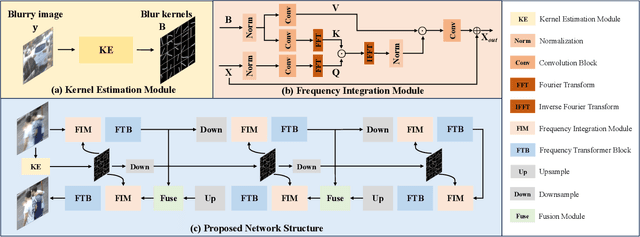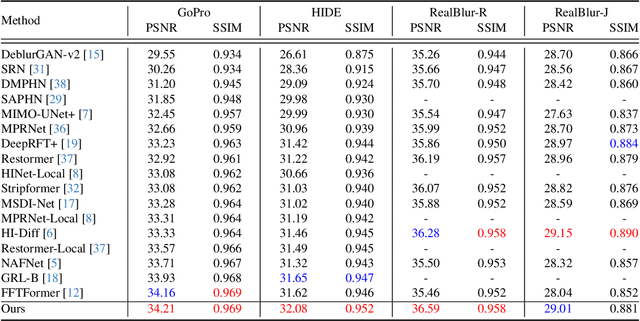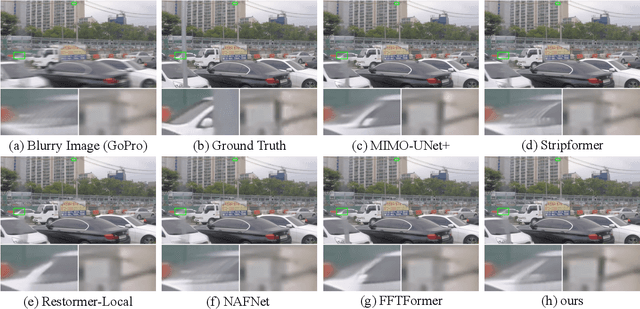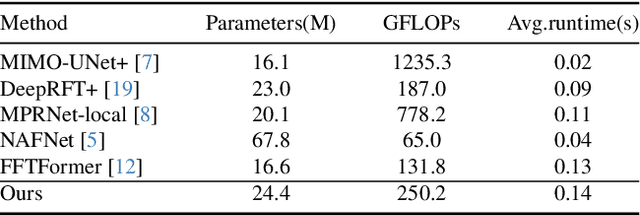Yujiu Yang
S2J: Bridging the Gap Between Solving and Judging Ability in Generative Reward Models
Sep 26, 2025Abstract:With the rapid development of large language models (LLMs), generative reward models (GRMs) have been widely adopted for reward modeling and evaluation. Previous studies have primarily focused on training specialized GRMs by optimizing them on preference datasets with the judgment correctness as supervision. While it's widely accepted that GRMs with stronger problem-solving capabilities typically exhibit superior judgment abilities, we first identify a significant solve-to-judge gap when examining individual queries. Specifically, the solve-to-judge gap refers to the phenomenon where GRMs struggle to make correct judgments on some queries (14%-37%), despite being fully capable of solving them. In this paper, we propose the Solve-to-Judge (S2J) approach to address this problem. Specifically, S2J simultaneously leverages both the solving and judging capabilities on a single GRM's output for supervision, explicitly linking the GRM's problem-solving and evaluation abilities during model optimization, thereby narrowing the gap. Our comprehensive experiments demonstrate that S2J effectively reduces the solve-to-judge gap by 16.2%, thereby enhancing the model's judgment performance by 5.8%. Notably, S2J achieves state-of-the-art (SOTA) performance among GRMs built on the same base model while utilizing a significantly smaller training dataset. Moreover, S2J accomplishes this through self-evolution without relying on more powerful external models for distillation.
A.S.E: A Repository-Level Benchmark for Evaluating Security in AI-Generated Code
Aug 25, 2025Abstract:The increasing adoption of large language models (LLMs) in software engineering necessitates rigorous security evaluation of their generated code. However, existing benchmarks are inadequate, as they focus on isolated code snippets, employ unstable evaluation methods that lack reproducibility, and fail to connect the quality of input context with the security of the output. To address these gaps, we introduce A.S.E (AI Code Generation Security Evaluation), a benchmark for repository-level secure code generation. A.S.E constructs tasks from real-world repositories with documented CVEs, preserving full repository context like build systems and cross-file dependencies. Its reproducible, containerized evaluation framework uses expert-defined rules to provide stable, auditable assessments of security, build quality, and generation stability. Our evaluation of leading LLMs on A.S.E reveals three key findings: (1) Claude-3.7-Sonnet achieves the best overall performance. (2) The security gap between proprietary and open-source models is narrow; Qwen3-235B-A22B-Instruct attains the top security score. (3) Concise, ``fast-thinking'' decoding strategies consistently outperform complex, ``slow-thinking'' reasoning for security patching.
PeRL: Permutation-Enhanced Reinforcement Learning for Interleaved Vision-Language Reasoning
Jun 17, 2025Abstract:Inspired by the impressive reasoning capabilities demonstrated by reinforcement learning approaches like DeepSeek-R1, recent emerging research has begun exploring the use of reinforcement learning (RL) to enhance vision-language models (VLMs) for multimodal reasoning tasks. However, most existing multimodal reinforcement learning approaches remain limited to spatial reasoning within single-image contexts, yet still struggle to generalize to more complex and real-world scenarios involving multi-image positional reasoning, where understanding the relationships across images is crucial. To address this challenge, we propose a general reinforcement learning approach PeRL tailored for interleaved multimodal tasks, and a multi-stage strategy designed to enhance the exploration-exploitation trade-off, thereby improving learning efficiency and task performance. Specifically, we introduce permutation of image sequences to simulate varied positional relationships to explore more spatial and positional diversity. Furthermore, we design a rollout filtering mechanism for resampling to focus on trajectories that contribute most to learning optimal behaviors to exploit learned policies effectively. We evaluate our model on 5 widely-used multi-image benchmarks and 3 single-image benchmarks. Our experiments confirm that PeRL trained model consistently surpasses R1-related and interleaved VLM baselines by a large margin, achieving state-of-the-art performance on multi-image benchmarks, while preserving comparable performance on single-image tasks.
Zero-P-to-3: Zero-Shot Partial-View Images to 3D Object
May 29, 2025



Abstract:Generative 3D reconstruction shows strong potential in incomplete observations. While sparse-view and single-image reconstruction are well-researched, partial observation remains underexplored. In this context, dense views are accessible only from a specific angular range, with other perspectives remaining inaccessible. This task presents two main challenges: (i) limited View Range: observations confined to a narrow angular scope prevent effective traditional interpolation techniques that require evenly distributed perspectives. (ii) inconsistent Generation: views created for invisible regions often lack coherence with both visible regions and each other, compromising reconstruction consistency. To address these challenges, we propose \method, a novel training-free approach that integrates the local dense observations and multi-source priors for reconstruction. Our method introduces a fusion-based strategy to effectively align these priors in DDIM sampling, thereby generating multi-view consistent images to supervise invisible views. We further design an iterative refinement strategy, which uses the geometric structures of the object to enhance reconstruction quality. Extensive experiments on multiple datasets show the superiority of our method over SOTAs, especially in invisible regions.
Dynamic-I2V: Exploring Image-to-Video Generaion Models via Multimodal LLM
May 26, 2025



Abstract:Recent advancements in image-to-video (I2V) generation have shown promising performance in conventional scenarios. However, these methods still encounter significant challenges when dealing with complex scenes that require a deep understanding of nuanced motion and intricate object-action relationships. To address these challenges, we present Dynamic-I2V, an innovative framework that integrates Multimodal Large Language Models (MLLMs) to jointly encode visual and textual conditions for a diffusion transformer (DiT) architecture. By leveraging the advanced multimodal understanding capabilities of MLLMs, our model significantly improves motion controllability and temporal coherence in synthesized videos. The inherent multimodality of Dynamic-I2V further enables flexible support for diverse conditional inputs, extending its applicability to various downstream generation tasks. Through systematic analysis, we identify a critical limitation in current I2V benchmarks: a significant bias towards favoring low-dynamic videos, stemming from an inadequate balance between motion complexity and visual quality metrics. To resolve this evaluation gap, we propose DIVE - a novel assessment benchmark specifically designed for comprehensive dynamic quality measurement in I2V generation. In conclusion, extensive quantitative and qualitative experiments confirm that Dynamic-I2V attains state-of-the-art performance in image-to-video generation, particularly revealing significant improvements of 42.5%, 7.9%, and 11.8% in dynamic range, controllability, and quality, respectively, as assessed by the DIVE metric in comparison to existing methods.
Invisible Entropy: Towards Safe and Efficient Low-Entropy LLM Watermarking
May 20, 2025Abstract:Logit-based LLM watermarking traces and verifies AI-generated content by maintaining green and red token lists and increasing the likelihood of green tokens during generation. However, it fails in low-entropy scenarios, where predictable outputs make green token selection difficult without disrupting natural text flow. Existing approaches address this by assuming access to the original LLM to calculate entropy and selectively watermark high-entropy tokens. However, these methods face two major challenges: (1) high computational costs and detection delays due to reliance on the original LLM, and (2) potential risks of model leakage. To address these limitations, we propose Invisible Entropy (IE), a watermarking paradigm designed to enhance both safety and efficiency. Instead of relying on the original LLM, IE introduces a lightweight feature extractor and an entropy tagger to predict whether the entropy of the next token is high or low. Furthermore, based on theoretical analysis, we develop a threshold navigator that adaptively sets entropy thresholds. It identifies a threshold where the watermark ratio decreases as the green token count increases, enhancing the naturalness of the watermarked text and improving detection robustness. Experiments on HumanEval and MBPP datasets demonstrate that IE reduces parameter size by 99\% while achieving performance on par with state-of-the-art methods. Our work introduces a safe and efficient paradigm for low-entropy watermarking. https://github.com/Carol-gutianle/IE https://huggingface.co/datasets/Carol0110/IE-Tagger
Shadow-FT: Tuning Instruct via Base
May 19, 2025Abstract:Large language models (LLMs) consistently benefit from further fine-tuning on various tasks. However, we observe that directly tuning the INSTRUCT (i.e., instruction tuned) models often leads to marginal improvements and even performance degeneration. Notably, paired BASE models, the foundation for these INSTRUCT variants, contain highly similar weight values (i.e., less than 2% on average for Llama 3.1 8B). Therefore, we propose a novel Shadow-FT framework to tune the INSTRUCT models by leveraging the corresponding BASE models. The key insight is to fine-tune the BASE model, and then directly graft the learned weight updates to the INSTRUCT model. Our proposed Shadow-FT introduces no additional parameters, is easy to implement, and significantly improves performance. We conduct extensive experiments on tuning mainstream LLMs, such as Qwen 3 and Llama 3 series, and evaluate them across 19 benchmarks covering coding, reasoning, and mathematical tasks. Experimental results demonstrate that Shadow-FT consistently outperforms conventional full-parameter and parameter-efficient tuning approaches. Further analyses indicate that Shadow-FT can be applied to multimodal large language models (MLLMs) and combined with direct preference optimization (DPO). Codes and weights are available at \href{https://github.com/wutaiqiang/Shadow-FT}{Github}.
From Rankings to Insights: Evaluation Should Shift Focus from Leaderboard to Feedback
May 10, 2025Abstract:Automatic evaluation benchmarks such as MT-Bench, Arena-Hard, and Auto-Arena are seeing growing adoption for the evaluation of Large Language Models (LLMs). Existing research has primarily focused on approximating human-based model rankings using limited data and LLM-as-a-Judge. However, the fundamental premise of these studies, which attempts to replicate human rankings, is flawed. Specifically, these benchmarks typically offer only overall scores, limiting their utility to leaderboard rankings, rather than providing feedback that can guide model optimization and support model profiling. Therefore, we advocate for an evaluation paradigm shift from approximating human-based model rankings to providing feedback with analytical value. To this end, we introduce Feedbacker, an evaluation framework that provides comprehensive and fine-grained results, thereby enabling thorough identification of a model's specific strengths and weaknesses. Such feedback not only supports the targeted optimization of the model but also enhances the understanding of its behavior. Feedbacker comprises three key components: an extensible tree-based query taxonomy builder, an automated query synthesis scheme, and a suite of visualization and analysis tools. Furthermore, we propose a novel LLM-as-a-Judge method: PC2 (Pre-Comparison-derived Criteria) pointwise evaluation. This method derives evaluation criteria by pre-comparing the differences between several auxiliary responses, achieving the accuracy of pairwise evaluation while maintaining the time complexity of pointwise evaluation. Finally, leveraging the evaluation results of 17 mainstream LLMs, we demonstrate the usage of Feedbacker and highlight its effectiveness and potential. Our homepage project is available at https://liudan193.github.io/Feedbacker.
Frequency-domain Learning with Kernel Prior for Blind Image Deblurring
Apr 20, 2025



Abstract:While achieving excellent results on various datasets, many deep learning methods for image deblurring suffer from limited generalization capabilities with out-of-domain data. This limitation is likely caused by their dependence on certain domain-specific datasets. To address this challenge, we argue that it is necessary to introduce the kernel prior into deep learning methods, as the kernel prior remains independent of the image context. For effective fusion of kernel prior information, we adopt a rational implementation method inspired by traditional deblurring algorithms that perform deconvolution in the frequency domain. We propose a module called Frequency Integration Module (FIM) for fusing the kernel prior and combine it with a frequency-based deblurring Transfomer network. Experimental results demonstrate that our method outperforms state-of-the-art methods on multiple blind image deblurring tasks, showcasing robust generalization abilities. Source code will be available soon.
DnLUT: Ultra-Efficient Color Image Denoising via Channel-Aware Lookup Tables
Mar 20, 2025Abstract:While deep neural networks have revolutionized image denoising capabilities, their deployment on edge devices remains challenging due to substantial computational and memory requirements. To this end, we present DnLUT, an ultra-efficient lookup table-based framework that achieves high-quality color image denoising with minimal resource consumption. Our key innovation lies in two complementary components: a Pairwise Channel Mixer (PCM) that effectively captures inter-channel correlations and spatial dependencies in parallel, and a novel L-shaped convolution design that maximizes receptive field coverage while minimizing storage overhead. By converting these components into optimized lookup tables post-training, DnLUT achieves remarkable efficiency - requiring only 500KB storage and 0.1% energy consumption compared to its CNN contestant DnCNN, while delivering 20X faster inference. Extensive experiments demonstrate that DnLUT outperforms all existing LUT-based methods by over 1dB in PSNR, establishing a new state-of-the-art in resource-efficient color image denoising. The project is available at https://github.com/Stephen0808/DnLUT.
 Add to Chrome
Add to Chrome Add to Firefox
Add to Firefox Add to Edge
Add to Edge